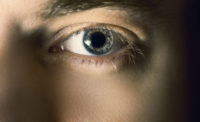The Bureau of Labor Statistics reports at least 60,000 foot injuries are responsible for keeping people from work every year. The average cost of one of those lost workdays is $9,600, and 80 percent of foot injuries are caused by objects that weigh 30 pounds or less.
Foot and leg injuries can result in permanent disabilities, such as partial or complete loss of walking ability. This impacts how or if the employee can do his or her job even after returning to work.
Any occupation can result in a foot injury, including a desk job. However, some employees are more at risk than others. Common risky workplaces include:
Construction
This is considered one of the most dangerous occupations in the world. Hazards are everywhere and range from falling objects to heavy or unsafe equipment. Construction workers can also sustain foot injuries from climbing ladders or scaffolding. Those who do not wear proper safety equipment or secure their tools and machines are particularly at risk.
Transportation
Truckers, bus drivers, and other members of the transportation industry are at risk for a variety of reasons. These include heavy lifting, climbing in and out of high vehicles, and driving for long periods. Sitting still too long can weaken the foot muscles, increasing risk of strains and sprains. Additionally, many transportation workers smoke, which can lead to peripheral vascular disease, Buerger’s disease, and other conditions.
Food and retail
People who work in these industries can be required to stand up to 12 hours a day. This leads to blisters, dry feet, and sometimes bruised toenails. It can also exacerbate sweat, bacteria, and foot odor.
Fitness, dancing, and similar occupations
The vigorous exercise puts these workers at risk for the above injuries and possible broken bones.
Preventing foot injury at work
Occupational health organizations such as OSHA have several recommendations for preventing foot injuries. First, wear sturdy footwear that provides plenty of arch support, especially if you work on unstable terrain. Make sure your shoes fit properly, and do not wear heels or pointed shoes.
Rest your feet when and where possible. Do not climb in unsafe areas. Do not smoke, and treat foot injuries that do occur, such as blisters, with proper first aid.
Source: www.kcfoot.com Kansas City Foot Specialists



